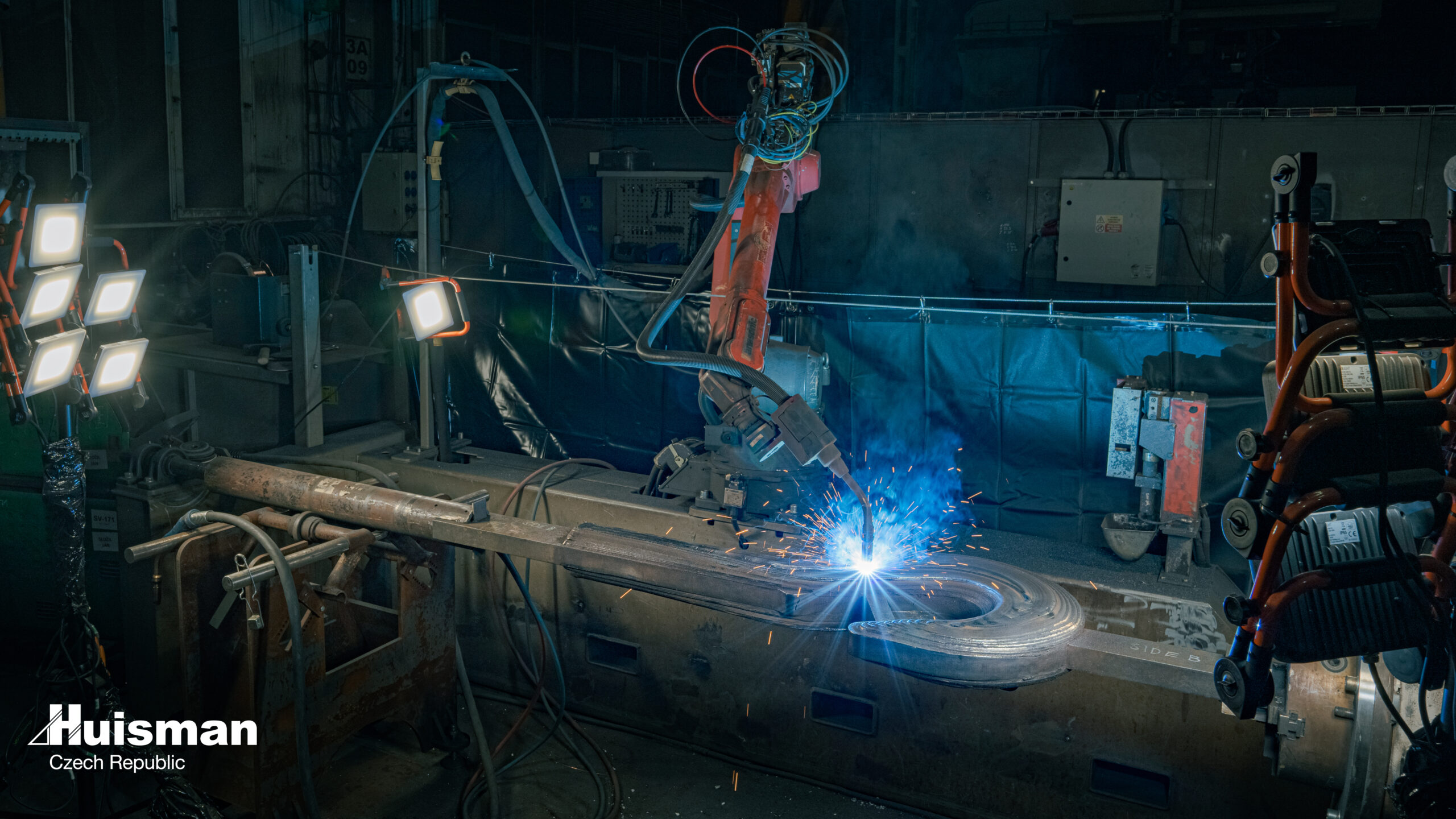
Huisman Czech Republic pushes the limits of 3D printing with hooks supporting up to 250 tons for offshore cranes
Sviadnov, October 30, 2024 – Weighing 220 kilograms, measuring one meter in length, and supporting a load capacity of 35 tons, Huisman Czech Republic has produced its latest 3D-printed hook. Designed for the auxiliary crane of a vessel used for installing offshore wind turbines, this hook reflects Huisman Czech Republic’s pioneering work in the field. In 2019, the Sviadnov-based company became the first in the world to successfully deliver certified 3D-printed hooks for offshore cranes.
The hooks are manufactured using the WAAM (Wire Arc Additive Manufacturing) method, a breakthrough in additive manufacturing that enables significant material savings. This technique uses wire arc welding to layer intricate shapes gradually. “WAAM technology allows us to precisely define material properties while ensuring internal quality and maintaining competitive production costs compared to traditional hook manufacturing methods, such as forging and casting,” explains Karel Pavlíček, Managing Director of Huisman Czech Republic.
The complete production of a single hook, from the 3D model design by Huisman Czech Republic’s in-house design team to printing, finishing operations, non-destructive testing, machining, load testing, and painting, takes about one month. “The 3D printing process is fully automated and robot-controlled, with all parameters monitored during printing to ensure top quality. The deposition rate ranges from 3 to 5 kilograms of material per hour,” adds Antonín Jedinák, Welding Engineer at Huisman Czech Republic.
Huisman Czech Republic has so far produced twelve 3D-printed hooks, primarily used in the marine industry. Among the largest are four double hooks, each with a 250-ton load capacity. “In the future, we see additional applications for this technology, particularly in custom or small-batch production of parts with unique dimensions and shapes, which could eventually weigh up to 2,500 kilograms,” concludes Karel Pavlíček.
Step-by-Step: How a 3D-Printed Hook is Made at Huisman Czech Republic
- The process begins with the design of a 3D digital model of the hook by Huisman Czech Republic’s in-house design team.
- The model is then sectioned, and a robot movement path for each layer is generated.
- The 3D printing process (layer by layer) is managed by a robot that continuously logs printing parameters.
- Several intermediate non-destructive inspections are conducted during printing to ensure internal quality.
- Final steps include grinding the component to the finished shape, annealing to relieve internal stress, additional non-destructive testing, and machining.
- Load testing of the hook is performed at Huisman Czech Republic’s test facility in Sviadnov under the supervision of an independent certification body.






